Ultralight meets ultra-convenient
 Sheri and Randy Propster
Sheri and Randy Propster As one year winds down, and a new one is on the horizon, many outdoor companies use this time to unveil their latest products and upgrades to a customer base that is chomping at the bit for Mother Nature to flip the switch back to spring.
For the past seven years, Sheri and Randy Propster have been traversing the country as a part of Backpacker magazine’s “Get Out More Tour.” While in college, they went on a hiking trip to the Blue Ridge Mountains in Virginia that would spark a shared passion for the outdoors that culminated with their marriage and a 4,200 mile thru-hike of the American Discovery Trail for their honeymoon.
Now, they share their love of the outdoors with the public by touring the country for Backpacker to encourage
people to spend more time in the outdoors. This November, the Propsters came to the Germantown Avenue location of Outdoors Inc. as a part of their tour. Here are some highlights of the latest gear they were presenting.
For the past seven years, Sheri and Randy Propster have been traversing the country as a part of Backpacker magazine’s “Get Out More Tour.” While in college, they went on a hiking trip to the Blue Ridge Mountains in Virginia that would spark a shared passion for the outdoors that culminated with their marriage and a 4,200 mile thru-hike of the American Discovery Trail for their honeymoon.
Now, they share their love of the outdoors with the public by touring the country for Backpacker to encourage
people to spend more time in the outdoors. This November, the Propsters came to the Germantown Avenue location of Outdoors Inc. as a part of their tour. Here are some highlights of the latest gear they were presenting.
 Helinox trekking pole Passport Series
Helinox trekking pole Passport Series Hellinox Trekking Poles: Passport Series
“I call trekking poles an instant upgrade. One of my favorite studies was done by a research scientist who determined that four points of contact changes the distribution of weight so much so that on a level surface you take 11 pounds, or more off of the pressure on your lower legs every step you take, and on an incline or decline you’re removing up to 24 pounds, or more. So if I gave you 11 ounces to take away 11 pounds; that’s a backpacking no-brainer.”
– Randy Propster
Helinox is a relative newcomer to the trekking pole market, but its parent company DAC is well-known for making surprisingly sturdy tent poles out of ultra-lightweight
alloys. Earlier this year, they decided to apply their custom alloys to trekking poles, and the result was Helinox.
They offer three series of poles, the Causeway, the Ridgeline and the Passport. The latter is a favorite among ultralight backpackers, because each pole collapses down, in a similar fashion to a tent pole, to a mere 13.8 inches, weighs 5.5 ounces and is shockingly durable.
“I call trekking poles an instant upgrade. One of my favorite studies was done by a research scientist who determined that four points of contact changes the distribution of weight so much so that on a level surface you take 11 pounds, or more off of the pressure on your lower legs every step you take, and on an incline or decline you’re removing up to 24 pounds, or more. So if I gave you 11 ounces to take away 11 pounds; that’s a backpacking no-brainer.”
– Randy Propster
Helinox is a relative newcomer to the trekking pole market, but its parent company DAC is well-known for making surprisingly sturdy tent poles out of ultra-lightweight
alloys. Earlier this year, they decided to apply their custom alloys to trekking poles, and the result was Helinox.
They offer three series of poles, the Causeway, the Ridgeline and the Passport. The latter is a favorite among ultralight backpackers, because each pole collapses down, in a similar fashion to a tent pole, to a mere 13.8 inches, weighs 5.5 ounces and is shockingly durable.
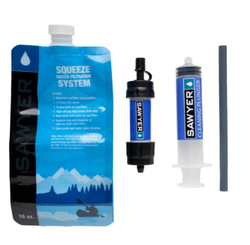 Sawyer Squeeze Filter
Sawyer Squeeze Filter Sawyer Squeeze Filter
“The internal workings of this filter were designed in the medical field for kidney dialysis. They utilized the .1 micron hollow fiber core to clean blood, but
recreationally, it cleans water just as effectively. Anything passing through
this side can’t get through if it is bigger than .1 micron, so it will eliminate
bacteria, protozoa, cryptosporidium, Giardia or anything that we would need to
be worried about from our water supply.”
–Randy Propster
This small filtration device is not the first of its kind, but with its 3 ounce pack weight and its interchangeable system of hoses and bags, it is one of the most convenient. It comes with three attachable bags of varying size that can be filled up from the source and filtered through the device into your container of choice.
The system works so efficiently that kayakers or canoeists are able to use the device to drink directly from the source without even stopping. Unlike most systems, the filter does not require replacing and comes with a million gallon guarantee.
“The internal workings of this filter were designed in the medical field for kidney dialysis. They utilized the .1 micron hollow fiber core to clean blood, but
recreationally, it cleans water just as effectively. Anything passing through
this side can’t get through if it is bigger than .1 micron, so it will eliminate
bacteria, protozoa, cryptosporidium, Giardia or anything that we would need to
be worried about from our water supply.”
–Randy Propster
This small filtration device is not the first of its kind, but with its 3 ounce pack weight and its interchangeable system of hoses and bags, it is one of the most convenient. It comes with three attachable bags of varying size that can be filled up from the source and filtered through the device into your container of choice.
The system works so efficiently that kayakers or canoeists are able to use the device to drink directly from the source without even stopping. Unlike most systems, the filter does not require replacing and comes with a million gallon guarantee.
 PowerTraveler SolarMonkey Adventurer
PowerTraveler SolarMonkey Adventurer PowerTraveler SolarMonkey Adventurer
“One of the questions that we have gotten the most over the years is: ‘How do we keep our electronics charged?’ When this is fully charged we can let our iPhone drain down to zero percent, and just by the internal battery we can charge it fully twice.”
–Sheri Propster
More and more people are using their smartphones as GPS tracking devices, compasses, maps and for a myriad of other uses. However, these apps burn through battery life at an alarming rate. The PowerMonkey is a light weight, but extremely rugged, weatherproof solar charger that only weighs 9.4 ounces.
It comes with a carabineer that clips onto the back of one’s pack in order to charge the internal battery
while they are on the trail. The device also allows users to simultaneously charge their smartphones while the device charges the internal battery, thus allowing users to keep a full charge upon arriving at camp.
“One of the questions that we have gotten the most over the years is: ‘How do we keep our electronics charged?’ When this is fully charged we can let our iPhone drain down to zero percent, and just by the internal battery we can charge it fully twice.”
–Sheri Propster
More and more people are using their smartphones as GPS tracking devices, compasses, maps and for a myriad of other uses. However, these apps burn through battery life at an alarming rate. The PowerMonkey is a light weight, but extremely rugged, weatherproof solar charger that only weighs 9.4 ounces.
It comes with a carabineer that clips onto the back of one’s pack in order to charge the internal battery
while they are on the trail. The device also allows users to simultaneously charge their smartphones while the device charges the internal battery, thus allowing users to keep a full charge upon arriving at camp.
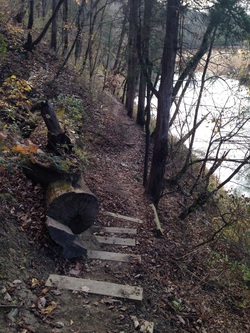
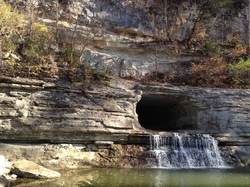
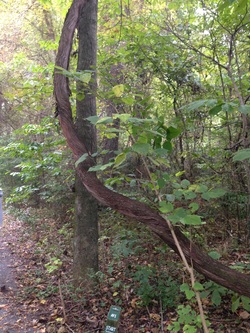
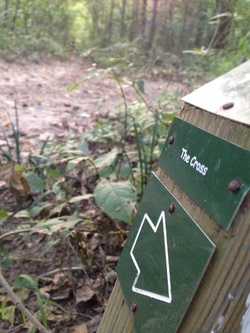

 RSS Feed
RSS Feed